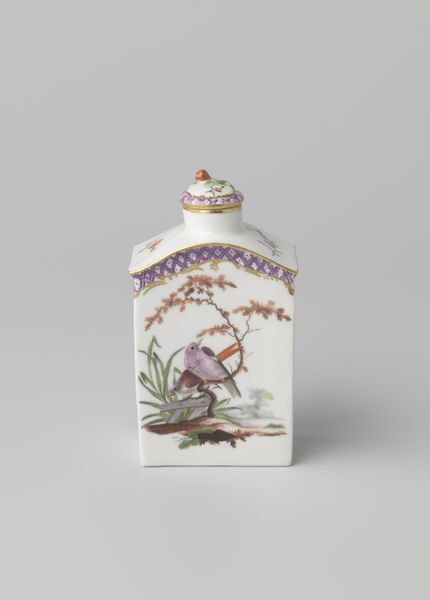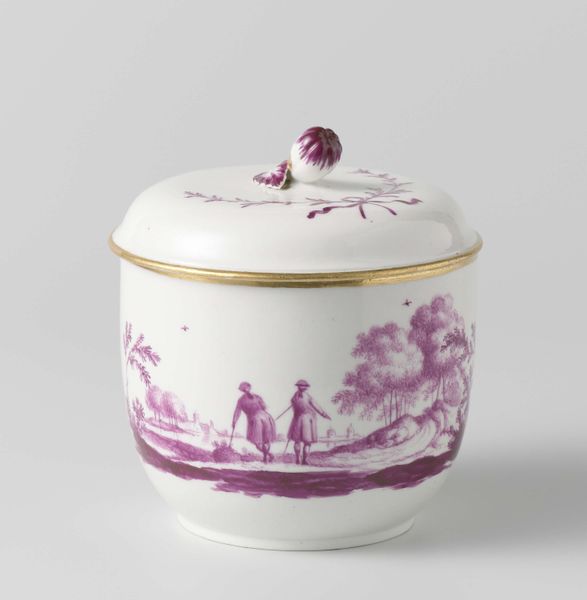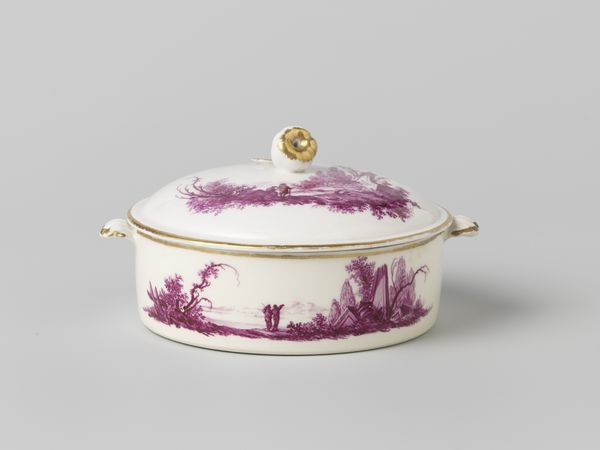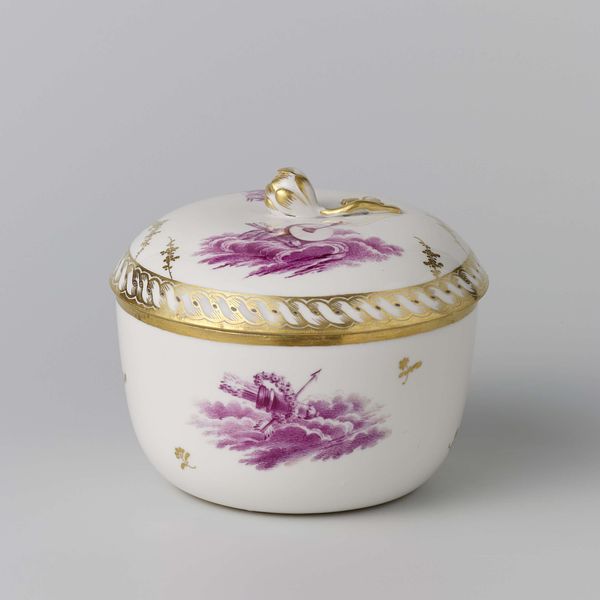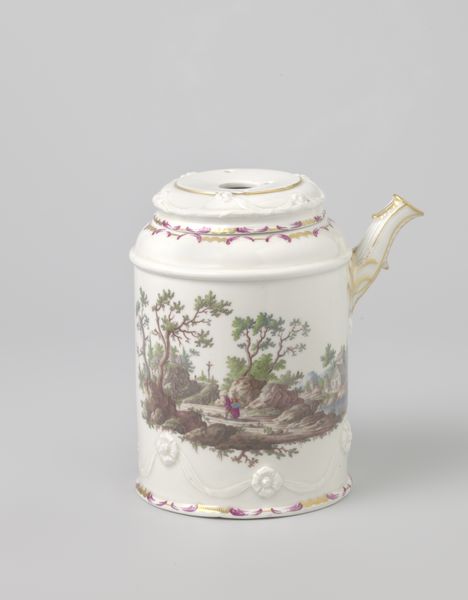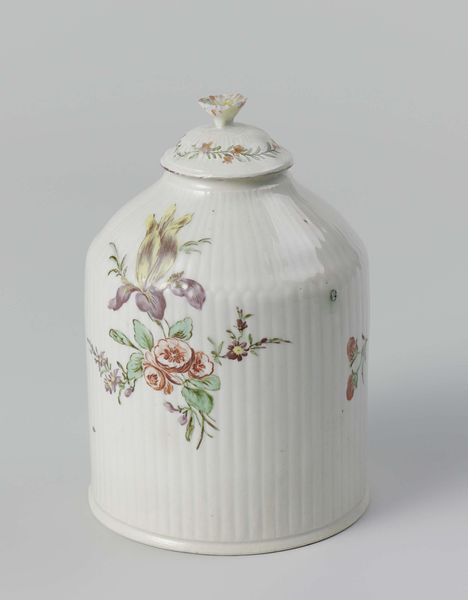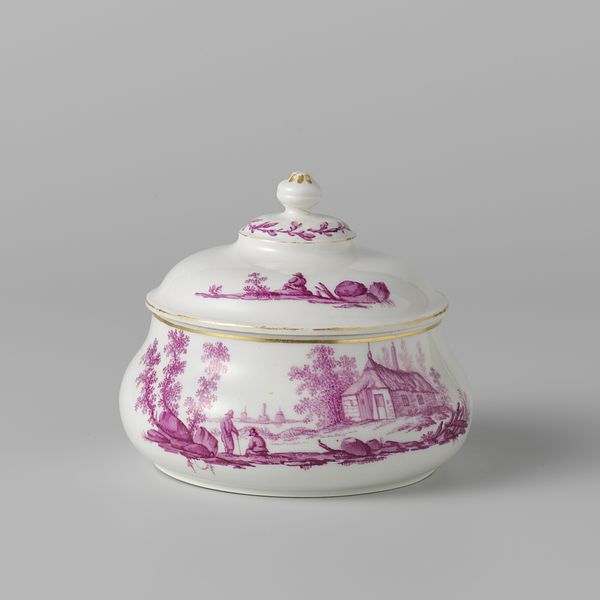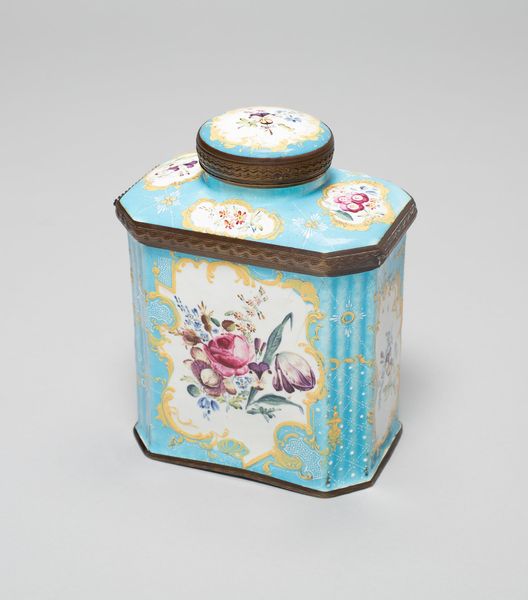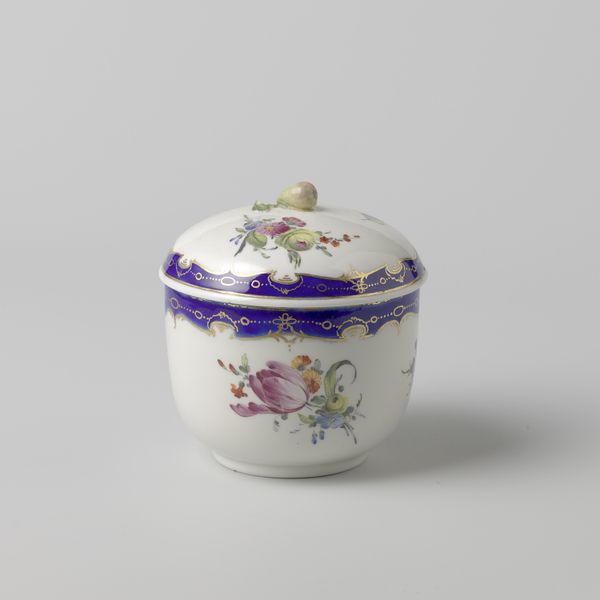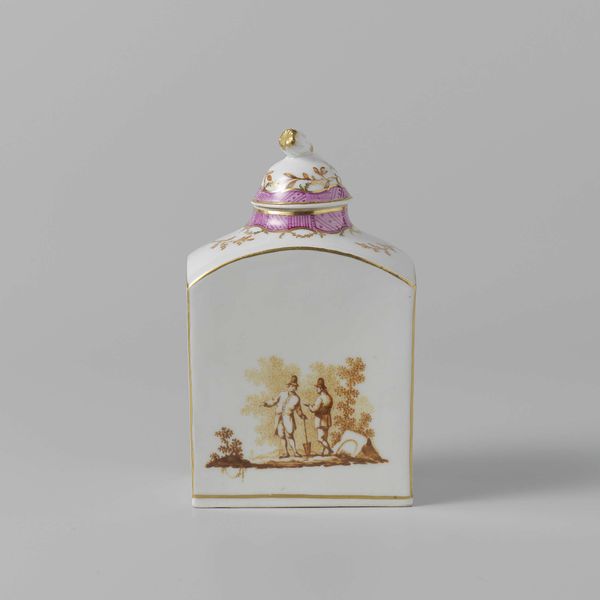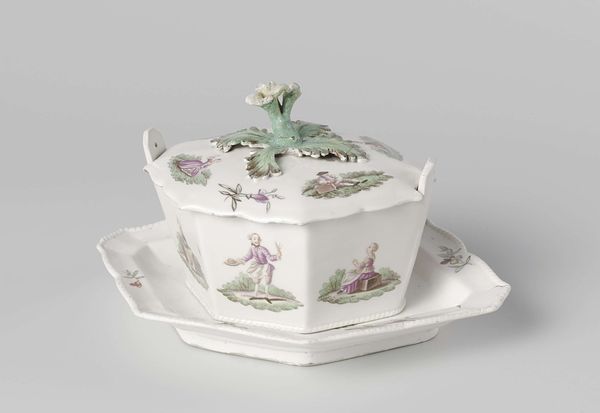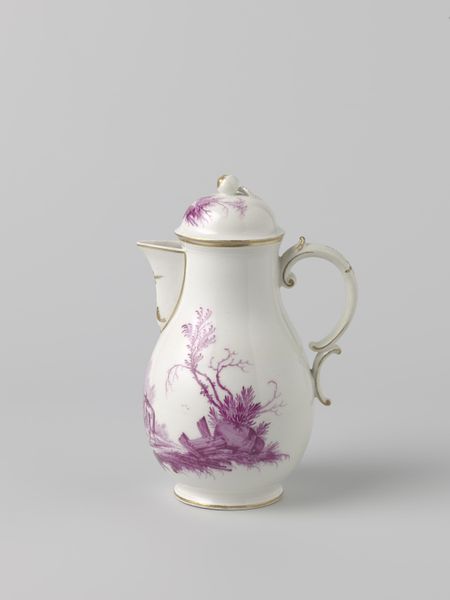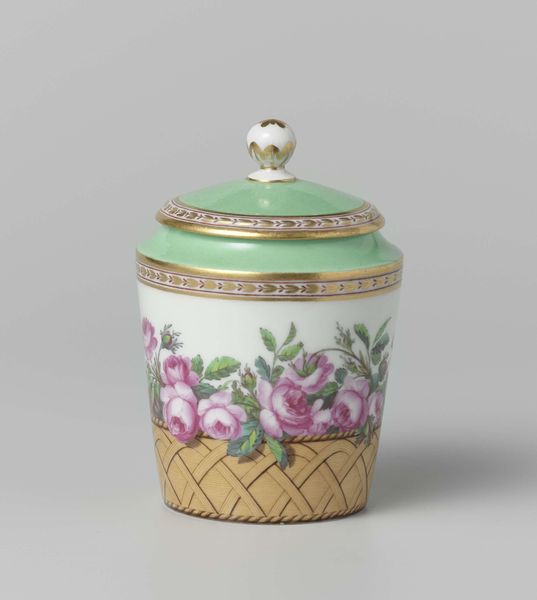
Dimensions: height 12.1 cm, length 7.0 cm, width 4.9 cm
Copyright: Rijks Museum: Open Domain
Editor: Here we have a piece from a tea service, dating back to around 1774-1782, crafted in the Loosdrecht manufactory. It's porcelain, and features these delicate, almost lavender, painted scenes. What's your take on it? What should viewers be looking at beyond the porcelain and landscapes? Curator: It's tempting to simply admire the rococo sensibility, isn’t it? But consider tea culture in the 18th century. Tea, sugar, porcelain – these were deeply tied to colonial trade, to exploited labor, and expanding capitalist markets. Editor: So, this seemingly innocent tea service… Curator: Exactly! It's both a beautiful example of decorative art and a material embodiment of global power dynamics. Porcelain itself was a status symbol, often imitating Chinese designs initially. Editor: I see. The very act of possessing and displaying it made a statement. The imagery is related? Curator: Precisely. While the pastoral scenes look innocuous, they represent a certain ideal of leisure and cultivated nature made possible through the exploitation in far away plantations. It speaks to class, wealth, and power within Dutch society and their colonial ambitions. Who do you think could afford such fine wares? Editor: Certainly not the people being exploited. It’s ironic. The scenes painted on the side romanticize something made possible by something not romantic at all. I'll never look at a fancy tea set the same way again. Curator: Good! Seeing art through this lens, considering the context of production and consumption, gives us a fuller, more critical understanding. Even seemingly harmless objects hold complex narratives.

